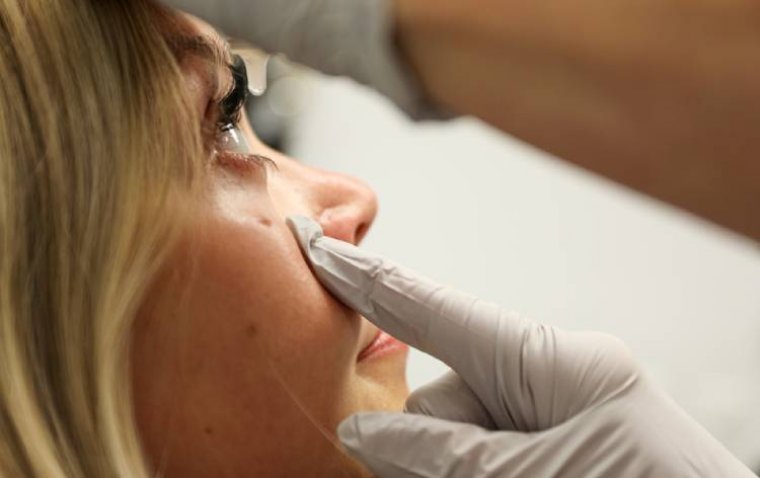
Scientists Develop Fluorescent Gel to Enhance Safety in Cataract Surgery
Cataracts, a condition that clouds the eye’s lens and impairs vision, are a near-universal experience with age. To improve safety in cataract surgery, scientists at Johns Hopkins have engineered a novel color-changing hydrogel that can help surgeons avoid complications in one of the world’s most commonly performed procedures.
Addressing Complications in Cataract Surgery
In cataract surgery, the clouded natural lens is removed and replaced with an artificial one. During the procedure, surgeons inject a clear hydrogel to inflate the eye and protect the cornea. However, any leftover gel can elevate eye pressure, causing pain and potentially leading to vision loss.
Johns Hopkins researchers Erick Rocher, Engr '24, and Dr. Allen Eghrari, an associate professor at the Wilmer Eye Institute, developed a clear gel that glows fluorescent green under blue light, allowing surgeons to verify complete gel removal. According to the researchers, this innovation could significantly enhance both the safety and efficiency of cataract surgery.
The Fluorescent Gel: How It Works
The study, recently published in the Journal of Cataract & Refractive Surgery, highlights how the gel, containing fluorescein and hyaluronic acid, works in real time. The fluorescent dye is chemically bonded to the gel’s polymer structure, so it remains intact during surgery without dispersing into the eye. Under normal light, the gel appears clear; once surgery is complete and the surgeon switches to blue light, the gel glows green, revealing any remaining traces for easy removal. Newer digital microscopes can also highlight the gel without additional blue light.
"Typically, surgeons had to rely on guesswork for complete gel removal," explained Rocher, a research technician and first author. "Now they can be confident that nothing is left behind."
Improved Safety and Practical Application
Previous attempts to dye the gel with staining agents often resulted in the dye leaking, making it hard to distinguish between gel and dye. This new fluorescent gel overcomes that issue, with each component already proven safe in clinical use. “The chemical reaction that adds visibility doesn’t significantly alter the gel’s viscosity, so it behaves just like traditional surgical gels,” noted Eghrari, underscoring the gel’s compatibility with current surgical practices.
Future Steps and Potential
The team has demonstrated success in porcine models, though further evaluation in human trials is essential. Scaling up production and identifying optimal dye concentrations will be key next steps. Having worked on the gel since his freshman year, Rocher is optimistic about its potential in clinical settings. "Sometimes the simplest innovations make the greatest impact,” he said.
With this innovative gel, cataract surgeries—and potentially other eye procedures—may soon see reduced complication rates and increased safety, marking a new advancement in ophthalmic care.
Reference:
Erick E. Rocher et al, Fluorescein-conjugated hyaluronic acid enables visualization of retained ophthalmic viscosurgical device in anterior chamber, Journal of Cataract & Refractive Surgery (2024). DOI: 10.1097/j.jcrs.0000000000001503
(1).jpg)










